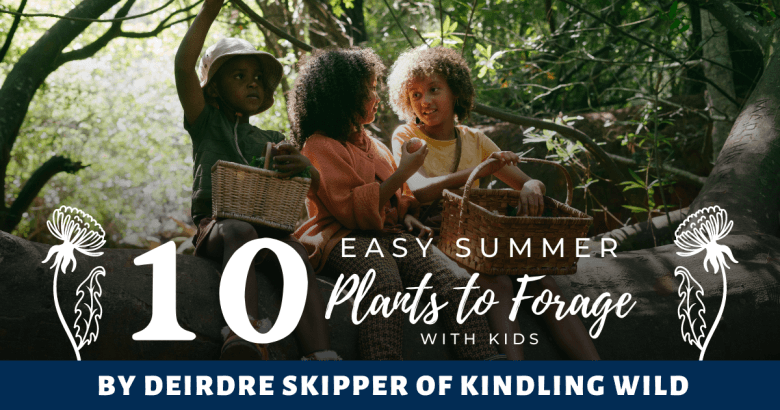By Deirdre Skipper, KindlingrWild
We may be closing up the books for summer, but do homeschoolers ever stop learning? Never! In summer, we simply take our learning outside and on the road even more than usual.
Playing in nature allows for a plethora of opportunities to do multi-disciplinary learning as a family. One incredible way to do this is through foraging.
Through foraging, your kids can gain understanding of the seasons, recognize patterns in plant growth, and become more attuned to the environment they live in.
They can also learn about our own human history and how our ancestors' survival depended on their ability to harvest food and medicine from the plants and animals around them.
It is no wonder that foraging has regained popularity in recent years as a way to reconnect with nature, explore local ecosystems, and discover the abundance of edible plants that surround us.
By engaging in foraging with our kids, we can open up a greater appreciation for the natural world and the sustenance it provides.
Here are some great reasons to forage with your kids:
1. Nature connection:
Foraging allows children to connect with nature on a deeper level. They can learn about different plants, their life cycles, and the ecosystems they belong to. It instils a sense of appreciation and respect for the natural world.
2. Environmental awareness:
Foraging teaches kids about the importance of sustainable practices and the impact of human actions on the environment. They can learn about conservation, biodiversity, and the significance of preserving natural habitats.
3. Hands-on learning:
Foraging is a hands-on activity that engages children's senses and encourages them to actively explore their surroundings. They can touch, smell, and taste different plants, developing a deeper understanding of the natural world.
4. Health and nutrition:
Foraging introduces kids to the concept of gathering their own food directly from nature. They can learn about wild edible plants, their nutritional benefits, and how they can be incorporated into healthy meals. Wild plants can often be much more nutrient dense than mass-produced ones, too!
5. Self-sufficiency and survival skills:
Foraging teaches children valuable skills that have been passed down through generations. They learn how to identify and gather wild edible plants, which can be useful in survival situations or when camping or hiking in the wilderness. It’s never a bad time to save a little on the food budget, either!
6. Cultural and historical appreciation:
Foraging provides an opportunity to explore traditional and cultural practices related to gathering wild foods. Kids can learn about the historical significance of foraging in different cultures and gain a deeper appreciation for the traditions of their ancestors.
7. Adventure and exploration:
Foraging with kids adds an element of adventure and excitement to outdoor activities. They can embark on nature walks, explore new environments, and discover hidden treasures. It helps foster a sense of curiosity and wonder about the natural world.
8. Bonding and family time:
Foraging together as a family creates lasting memories and strengthens family bonds. It provides an opportunity to spend quality time outdoors, away from screens and distractions, and engage in a shared activity that promotes teamwork and cooperation.
What are the best plants to start out with?
To start out with foraging, select easy-to-identify plants that are native to your area.
Here's a list of some of the easiest summer plants to forage for in North America:
1. Dandelion (Taraxacum officinale):
Dandelion leaves can be used in salads, and the flowers can be used in cupcakes, fritters, or infused into teas. The root, roasted, makes a caffeine-free coffee substitute!
2. Plantain (Plantago major):
Common plantain leaves can be used in salads or cooked as a leafy green vegetable. It is also great for bee stings or other insect bites!
3. Blackberries (Rubus spp.):
Blackberries grow abundantly in the summer and can be found in thickets and along woodland edges. They are delicious to eat fresh or can be used in various recipes like cobbler, pie, and smoothies.
4. Mulberries (Morus spp.):
Mulberries are sweet berries that can be found on trees in parks, along roadsides, or in open areas. They can be eaten fresh or used in desserts.
5. Wild mint (Mentha spp.):
Wild mint is a common plant found in moist areas, along streams, and in fields. Kids can use the leaves to make tea or dishes like mint sauce or pesto.
6. Wild strawberries (Fragaria spp.):
Wild strawberries can be found in woodlands, meadows, and open areas. They are smaller than cultivated strawberries but have a similar flavor and can be eaten fresh.
7. Daylilies (Hemerocallis spp.):
Daylilies have edible flowers and young shoots. They can be found in gardens, along roadsides, and in open fields.
8. Violets (Viola spp.):
Violets are beautiful flowering plants that grow in various habitats. Kids can learn to identify the heart-shaped leaves and use the flowers and leaves in salads or to make violet-infused syrups or jellies.
9. Wild Bergamot (Monarda fistulosa):
Wild bergamot, also known as bee balm, is a fragrant plant with purple flowers that attract pollinators. Kids can learn to identify it and use the leaves to make herbal teas.
10. Yarrow (Achillea millefolium):
Yarrow has a long history of medicinal use. Kids can learn to identify the feathery leaves and use the flowers or leaves to make yarrow-infused oils or salves for minor cuts, scrapes, or bruises.
Remember to teach kids about proper plant identification and safety guidelines when foraging. Encourage them to learn from experienced foragers or consult field guides specific to your region for accurate information.
Additionally, ensure you have permission to forage in a particular area and respect the environment by not overharvesting.
Here are three great books on foraging for kids and families for further reading:
This book offers a comprehensive guide to foraging and preparing wild edible plants and would be great for adults or older children to use. It includes detailed descriptions, photographs, and recipes for a variety of wild foods.
"Foraging with Kids: 52 Wild and Free Edibles to Enjoy With Your Children" by Adele Nozedar
This book offers a collection of foraging activities and recipes designed for families to enjoy together. It provides information about 52 wild edibles, including tips for identification, harvesting, and culinary uses.
“Family Foraging: A Fun Guide to Gathering and Eating Wild Plants” by David Hamilton
You’ve been off foraging, now you have to prepare these delicious wild foods into kid-friendly recipes! Look no further than this informative book.
I hope you enjoy harvesting some of nature’s bounty with your kids this summer!
By Deirdre Skipper from Kindling Wild | Blog & Etsy Shop
Read More!
- Log in to post comments





